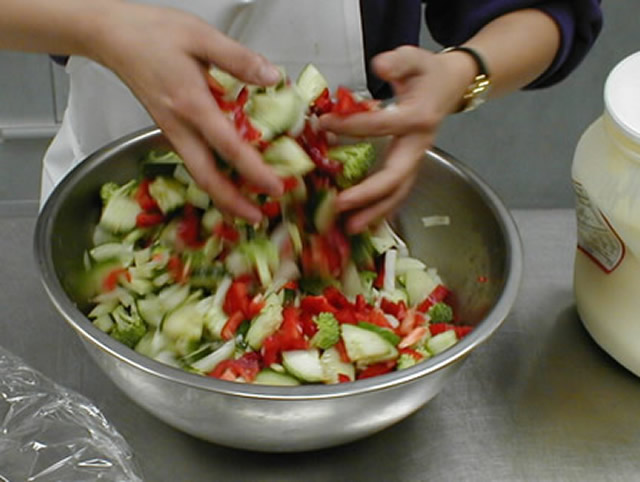Anchorage, Alaska to impose new updates to food safety laws including no bare hand contact with ready-to-eat foods for bartenders that handle sliced lemons and other like garnishes. Studies have shown that the rind and even the flesh of lemon slices harbor a plethora of microorganisms, either from the environment or the food handler. However, the true impact on public health has not been evaluated and there has been resistance from industry on the new proposed update.
Devin Kelly of Dispatch News writes
Anchorage bartenders and waiters may have to start using gloves or utensils to make mixed drinks with lemons, limes, olives or other garnishments if city health officials move forward with a recently unveiled update to local food safety laws.
Other proposed food safety law revisions, released last week, relate to wild game meat donations, wild mushrooms and the city’s growing cottage food industry. Health officials say Anchorage is trying to come more in line with state and federal regulations aimed at preventing foodborne illnesses.
This would be the most substantive update to the city’s food safety laws since 2010. Among the key changes:
* Elimination of an Anchorage law that allows bare-hand contact in bars and restaurants when it comes to garnishing beverages. Right now, Anchorage bartenders are exempt from state laws that require gloves or utensils to handle any kind of food that’s considered ready to eat.
* New regulations would exist for the sale in Anchorage of cottage food, or homespun, non-temperature-controlled products like bread, cookies, jams, pickles and relishes that weren’t acknowledged anywhere in city law until earlier this year. Officials say the changes reflect the booming popularity of farmers markets in the state. The revised update would create new licensing requirements, such as an Anchorage food worker card and recipe submissions.
* Freshly caught fish could be cooked at 125 degrees, about 20 degrees below the temperature recommended by federal authorities. Members of the Anchorage restaurant industry requested the change, hoping to cook more tender, flaky fish, according to DeAnn Fetko, deputy director of the Anchorage Department of Health and Human Services.
* Wild mushrooms would no longer need to be reviewed by a certified specialist, a rule that hasn’t been enforced because of the scarcity of those specialists, officials said. The state certifies mushroom producers, and Anchorage restaurants will be required to indicate on a menu that wild mushrooms are “not an inspected product.”
* Wild game meat could be donated to food banks and cultural programs, an old local law that officials say was inadvertently left out of the 2010 update.
* Businesses would be required to clean and maintain “grease interceptors,” or grease traps, at least every 30 days, and keep the records to show inspectors.
The rest of the story can be found here:
https://www.adn.com/alaska-news/anchorage/2017/08/29/gloves-for-bartenders-anchorage-proposes-updates-to-local-food-safety-laws/





.jpg) But in Oregon,
But in Oregon,  sound smugly superior.
sound smugly superior.